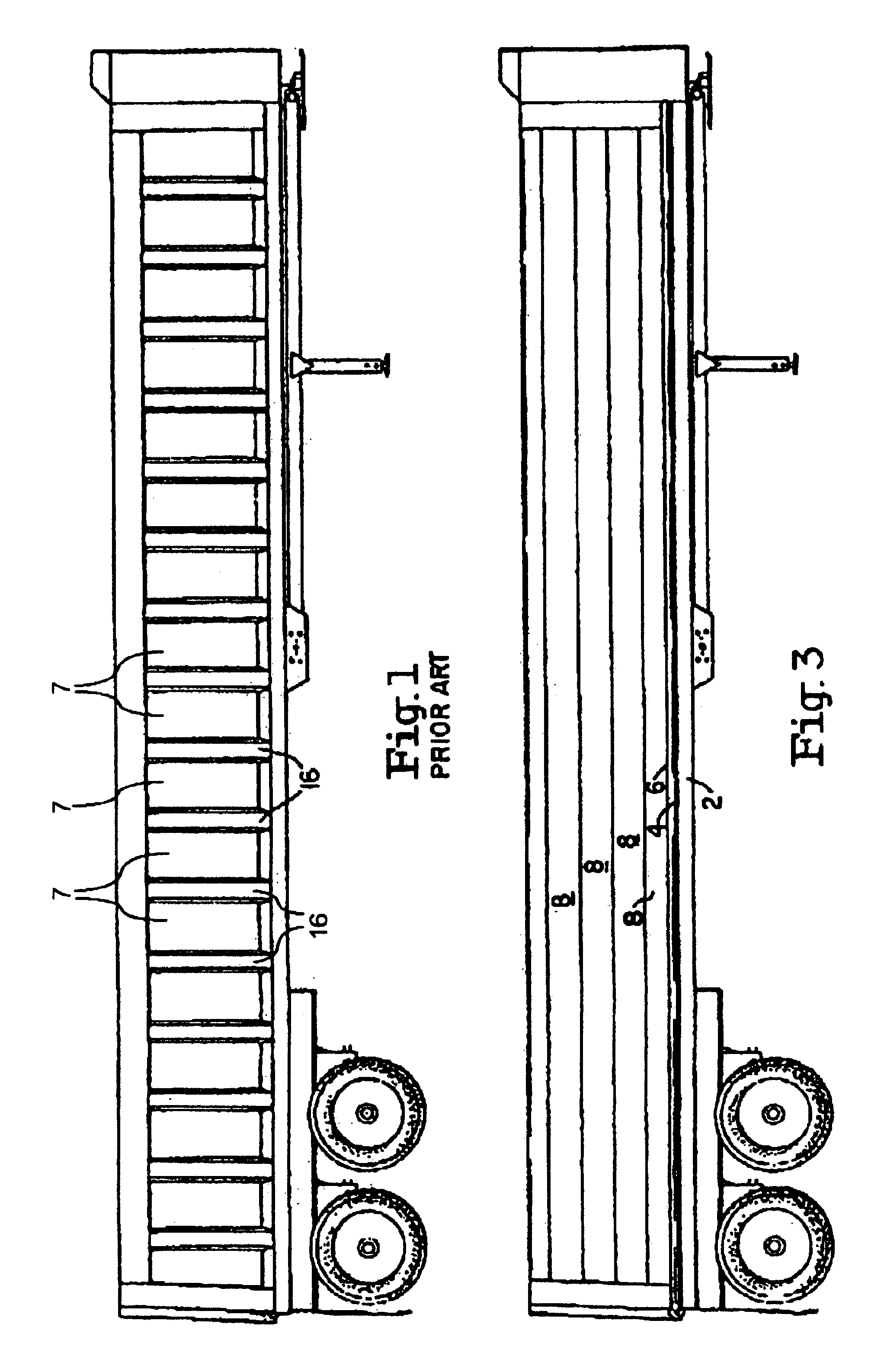Trailer body construction
a technology for trailers and body parts, applied in the direction of superstructure connections, transportation and packaging, doors, etc., can solve the problems of poor insulating characteristics of side walls, and achieve the effects of minimizing weight, maximizing sidewall strength and ability to resist abrasion, and retaining the resale value of trailers
- Summary
- Abstract
- Description
- Claims
- Application Information
AI Technical Summary
Benefits of technology
Problems solved by technology
Method used
Image
Examples
Embodiment Construction
Referring now specifically to FIGS. 2 and 3 of the accompanying drawings, walls of the load bearing region of a truck body are shown. A lower extrusion 2, of FIG. 2, having a rectangular cross section, extends along a predetermined length of the truck body. It can extend the full length of the body or only a partial length if desired to permit different designs of panels to be used for aesthetic reasons or for different needs in different applications. A horizontal extension 4, extends from the top of the extrusion 2 and has an upwardly extending curved member 6 that presses against an extrusion seated on top of the extrusion 2.
In accordance with prior art teachings, side stakes 16 can be deployed along the outer surface of side sheet 7. Please note, side sheet 7 is vertically laid across the length of the trailer with side stakes 16 vertically laid along the outer surface of side sheet 7. These stakes add substantial strength to the sidewalls of the truck body to permit increased l...
PUM
 Login to View More
Login to View More Abstract
Description
Claims
Application Information
 Login to View More
Login to View More - R&D
- Intellectual Property
- Life Sciences
- Materials
- Tech Scout
- Unparalleled Data Quality
- Higher Quality Content
- 60% Fewer Hallucinations
Browse by: Latest US Patents, China's latest patents, Technical Efficacy Thesaurus, Application Domain, Technology Topic, Popular Technical Reports.
© 2025 PatSnap. All rights reserved.Legal|Privacy policy|Modern Slavery Act Transparency Statement|Sitemap|About US| Contact US: help@patsnap.com



